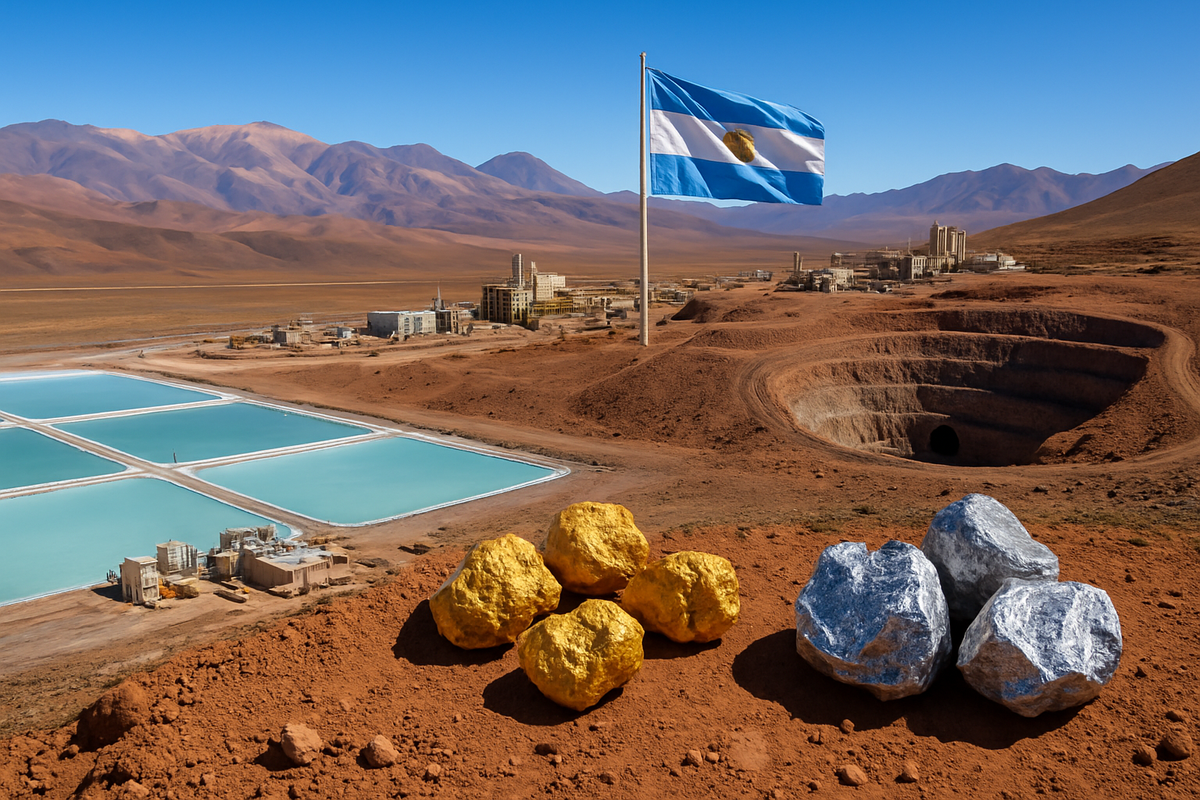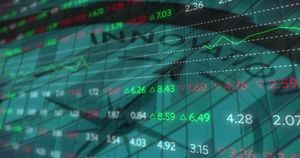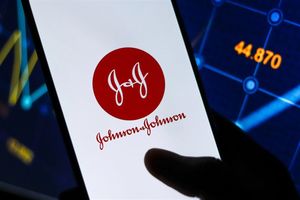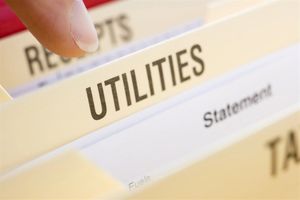Financial News
Argentina's Mining Sector Shatters Records in 2025, Fueled by Lithium, Gold, and Silver Boom

As of October 14, 2025, Argentina's mining industry is experiencing an unprecedented surge, with exports reaching historic record levels throughout the year. This remarkable growth, primarily propelled by a significant increase in lithium, gold, and silver production, is injecting crucial foreign exchange into the national economy and attracting substantial investment, positioning the sector as a cornerstone of the nation's economic recovery and diversification efforts.
For the first nine months of 2025, Argentina's mining exports totaled an impressive $4.21 billion, marking a substantial 32.9% increase compared to the same period in 2024. Industry projections, including those from the Argentine Chamber of Mining Companies (CAEM), anticipate that total mining exports for the entirety of 2025 could reach between $5 billion and $5.2 billion, setting a new historical benchmark for the country. This export boom is a vital development for Argentina, providing much-needed foreign currency, boosting government revenues, and fostering job creation across various regions.
A Deep Dive into Argentina's Mineral Bonanza
The record-breaking performance of Argentina's mining sector in 2025 is a culmination of strategic investments, favorable market conditions, and a concerted effort to leverage the nation's rich mineral reserves. While gold maintains its traditional dominance, lithium has rapidly emerged as a critical growth engine, alongside a robust performance from silver.
Gold remains Argentina's leading mining export, significantly contributing to the overall record value. Its strong performance is largely attributed to elevated international prices, which have more than offset a projected slight decrease in the volume of gold output in 2025 due to the maturation of some mining projects. Gold consistently accounts for approximately 80% of Argentina's total mining exports by value. Major gold producers in Argentina include Barrick Gold (NYSE: GOLD), with its Veladero mine, and Yamana Gold (TSX: YRI) (now part of Pan American Silver (NASDAQ: PAAS)), operating the Cerro Moro mine. Silver exports have also shown exceptional performance, buoyed by favorable market conditions and increased production volumes, making up a notable 12% to 14% of the nation's total mining exports.
Lithium, however, is the undisputed rising star, increasingly vital to Argentina's export future. The country, holding the world's second-largest lithium reserves, has seen remarkable export growth from its seven operational projects. In the first eight months of 2025, lithium exports reached $494 million, representing a 32% increase in value and a 56% rise in volume year-on-year. This makes lithium Argentina's second most-exported mineral, contributing 14% to total mining exports. Production is projected to increase by an impressive 54% in 2025, with exports growing by 43%. Key players in the lithium sector include Livent Corporation (NYSE: LTHM) (now part of Arcadium Lithium (NYSE: ALTM)) with its Fenix project, Allkem (ASX: AKE) (also now part of Arcadium Lithium (NYSE: ALTM)) with the Olaroz project, and Ganfeng Lithium (SHE: 002460) through its Cauchari-Olaroz project. The timeline leading to this boom includes significant exploration and development over the past decade, with several projects coming online or expanding production in the early 2020s, capitalizing on the global demand for electric vehicle batteries.
Despite the overall positive trend, the global lithium market has experienced complexities, including falling prices due to oversupply and tempered demand from the electric vehicle sector. This has led to delays in some new investment projects, but increasing production volumes from established operations are helping maintain overall export values. Initial market reactions to Argentina's record exports have been largely positive, with increased investor interest in the broader mining sector, though some caution remains regarding the volatile nature of commodity prices and the need for consistent government policies to sustain long-term growth.
Companies Poised for Gains and Navigating Challenges in the Argentine Boom
Argentina's mining surge in 2025 presents a mixed bag of opportunities and challenges for public companies, with those deeply entrenched in lithium, gold, and silver production standing to gain the most, while others might face headwinds from global price volatility or domestic production shifts. The government's efforts to deregulate the industry, promote fiscal incentives, and lift currency controls have created a more attractive investment climate, but the specific impact varies by mineral and operational efficiency.
In the burgeoning lithium sector, companies with significant operational capacity and expansion plans are clear winners. Arcadium Lithium plc (NYSE: ALTM), formed from the merger of Livent and Allkem, is a major beneficiary, operating the Salar del Hombre Muerto and Olaroz lithium brine operations. As a global lithium powerhouse, increased Argentine output directly translates to higher sales volumes and revenue growth for Arcadium. Similarly, Lithium Argentina (NYSE: LAAC), which spun off from Lithium Americas, operates the country's largest lithium brine operation, Cauchari-Olaroz, and is developing the Pozuelos-Pastos Grandes project. Its focus on low-cost production positions it for substantial gains from the projected 75-77% increase in Argentina's lithium production in 2025. Chinese giant Ganfeng Lithium Co. Ltd. (SHE: 002460), with its 51% stake in Caucharí-Olaroz, will also see its global lithium supply boosted. While global lithium prices have experienced volatility due to oversupply, the long-term demand for electric vehicles and energy storage systems ensures a robust market for efficient producers.
The record-high prices for gold and silver in 2025 are providing significant tailwinds for precious metal producers. Gold, hitting new highs above $4,000 per ounce, and silver, surging past $50 per ounce, are creating a lucrative environment. Barrick Gold Corporation (NYSE: GOLD), operating the Veladero gold mine in San Juan, stands to significantly increase revenues and profit margins. Fortuna Silver Mines Inc. (NYSE: FSM), with its Lindero gold mine in Salta, has reported strong production benefiting directly from elevated gold prices. For silver, Hochschild Mining Plc (LSE: HOC), which operates the San José silver mine in Santa Cruz, will see its profitability greatly enhanced by the historic price surge. Even companies like Austral Gold Ltd (ASX: AGD), which restarted commercial production at its Casposo gold and silver mine in October 2025, are well-positioned to capitalize on these favorable market conditions. These companies, despite some anticipated declines in domestic production volumes for gold and silver, are largely offsetting these with the exceptionally high metal prices.
However, some companies might face challenges. While the overall lithium outlook is positive, any lithium company in Argentina struggling with higher operating costs or slower project ramp-ups could find profit margins constrained by the global oversupply and volatile pricing environment. Furthermore, for gold and silver producers, while prices are soaring, Argentina's domestic production volumes for these metals are projected to decline in 2025 due to maturing mines and lower-grade ores. Companies heavily reliant on specific mines facing substantial output decreases, such as Pan American Silver (NASDAQ: PAAS) (whose Cerro Moro mine experienced reduced silver production in 2024 due to lower-grade ores) or McEwen Mining Inc. (NYSE: MUX) (which also processed lower-grade ores at San Jose), might see their overall profitability gains from the boom mitigated if production volumes cannot keep pace with the price increases. The key for all players will be efficient operations, strategic expansions, and a keen eye on global commodity markets and domestic policy consistency.
Wider Significance: Argentina's Role in a Shifting Global Landscape
Argentina's record-breaking mining exports in 2025 are not merely a domestic success story; they represent a significant shift in the global mineral landscape, aligning with and reinforcing several critical industry trends. The surge in lithium, gold, and silver production positions Argentina as an increasingly vital player, particularly in the supply of minerals essential for the global energy transition.
This boom is deeply intertwined with the worldwide push towards green energy and electric vehicles. The escalating demand for critical minerals like lithium and copper underscores Argentina's strategic importance, as the nation boasts the world's second-largest lithium reserves and significant copper deposits. By expanding its production of these key materials, Argentina is contributing directly to global decarbonization efforts and helping to diversify supply chains that are increasingly under geopolitical scrutiny. This also means increased competition for traditional mining powerhouses like Chile and Peru, as Argentina leverages its rich resources and more favorable policy environment to attract foreign investment.
The Argentine government has been proactive in implementing policies to foster mining investment, with the Regime for the Incentivization of Large Investments (RIGI) being a cornerstone. Introduced in 2024, RIGI aims to attract projects exceeding $200 million by offering 30-year fiscal stability, reduced corporate income tax, exemptions from import duties, and, crucially, the eventual elimination of export duties. The approval of the Rincón Mining PTY LTD (lithium) project under RIGI in June 2025, alongside Decree 563/2025 which eliminated export duties on 225 mining products, signals a strong commitment to improving competitiveness. However, regulatory challenges persist, notably with the Glacier Law (Ley 26,639). Enacted in 2010 to protect glaciers and periglacial environments, the law has created uncertainty for mining projects in high-altitude Andean regions. While the Milei administration is preparing a decree to amend the law, aiming to limit protection to active glaciers with hydric functions, this move has drawn criticism from environmental groups concerned about potential ecological impacts. The mining sector, however, eagerly awaits clarity to advance projects, especially those for copper and lithium.
Historically, Argentina's vast mineral potential has been largely underdeveloped compared to its neighbors. The current boom, particularly its focus on critical minerals, marks a departure from historical precedents like the localized and fleeting Tierra del Fuego gold rush of the late 19th century. This time, the drivers are global industrial shifts and sustained demand for materials underpinning the energy transition. While the long-standing Mining Investment Law (Law 24.196) has provided some stability for over three decades, the recent reforms under the Milei administration represent a more aggressive strategy to unlock Argentina's full potential, aiming to make it a more competitive and attractive destination for large-scale mining capital. The success of these reforms in sustaining long-term investment will largely hinge on achieving greater political and regulatory stability, especially with midterm elections on October 26, 2025, which could introduce new uncertainties.
What Comes Next: Navigating Opportunities and Challenges Ahead
As Argentina's mining sector rides the wave of record-high exports in 2025, the path forward involves both immense opportunities and significant challenges. The short-term outlook suggests continued robust performance, driven by strong commodity prices and increasing production volumes, particularly in lithium. However, long-term sustainability will depend on strategic adaptations, consistent policy frameworks, and the ability to navigate global market dynamics.
In the short term, the influx of foreign currency from mining exports will continue to bolster Argentina's international reserves, providing crucial stability to an economy historically prone to currency volatility. The increased tax revenues will support government initiatives, while direct and indirect job creation will stimulate regional economies. Companies like Arcadium Lithium (NYSE: ALTM), Lithium Argentina (NYSE: LAAC), Barrick Gold (NYSE: GOLD), and Fortuna Silver Mines (NYSE: FSM) are expected to continue their production ramp-ups and benefit from strong global prices for their respective minerals. However, the global lithium market, despite long-term demand, may still experience price fluctuations due to oversupply, requiring producers to maintain cost efficiency. The midterm elections on October 26, 2025, will be a critical event, as the outcome could influence the continuity and consistency of the pro-mining policies that have fueled the current boom.
Looking further ahead, Argentina has the potential to become a dominant force in critical minerals. Beyond lithium, the nation possesses six world-class copper projects in advanced stages, with government projections estimating copper export value to reach $3 billion by 2029 and peak at $11.7 billion in 2033. This diversification into copper, another essential mineral for the energy transition, represents a significant long-term opportunity. However, realizing this potential requires overcoming hurdles such as the Glacier Law's regulatory ambiguities and ensuring a stable political and economic environment to attract the massive capital investments needed for these large-scale projects. Potential strategic pivots for the government include refining the RIGI framework to address any investor concerns and streamlining environmental permitting processes while ensuring sustainable practices.
Market opportunities will emerge for companies specializing in mining technology, infrastructure development, and environmental services, as the sector expands. Challenges include managing the environmental impact of increased mining activity, ensuring local community engagement, and mitigating the risks associated with commodity price volatility. Potential scenarios range from sustained, diversified growth if policy stability and global demand hold, to a more tempered expansion if political uncertainty or global economic slowdowns impact investment. Investors should watch for further clarity on the Glacier Law, the results of the midterm elections, and global commodity price trends, especially for lithium and copper, which represent significant future growth drivers for Argentina.
Comprehensive Wrap-Up: A New Era for Argentine Mining
Argentina's mining sector is undeniably at a pivotal juncture in late 2025, marked by record-high exports driven by a powerful trifecta of lithium, gold, and silver. This boom is a testament to the nation's rich mineral endowment and recent policy shifts aimed at attracting foreign investment. The key takeaways from this event are the significant economic benefits, including a crucial injection of foreign exchange, increased tax revenues, and job creation, all contributing to Argentina's broader economic stability and diversification.
Moving forward, the market will closely assess Argentina's ability to maintain its pro-mining investment climate amidst political dynamics. The Regime for the Incentivization of Large Investments (RIGI) and the elimination of export duties have sent strong signals to the global mining community, but the upcoming midterm elections on October 26, 2025, will be crucial in determining the continuity of these policies. Resolving the ambiguities surrounding the Glacier Law is also paramount for unlocking the full potential of future projects, particularly in copper.
The lasting impact of this mining surge could transform Argentina into a global leader in critical minerals, playing an indispensable role in the world's transition to green energy. For investors, the coming months will be critical for observing the political landscape, the consistency of regulatory frameworks, and the trajectory of global commodity prices. Companies with established operations and those actively developing new projects in Argentina, particularly in lithium and copper, warrant close attention. The successful navigation of these factors will determine whether this record-setting year is merely a peak or the beginning of a sustained era of prosperity for Argentine mining.
This content is intended for informational purposes only and is not financial advice
More News
View More




Quotes delayed at least 20 minutes.
By accessing this page, you agree to the following
Privacy Policy and Terms Of Service.




